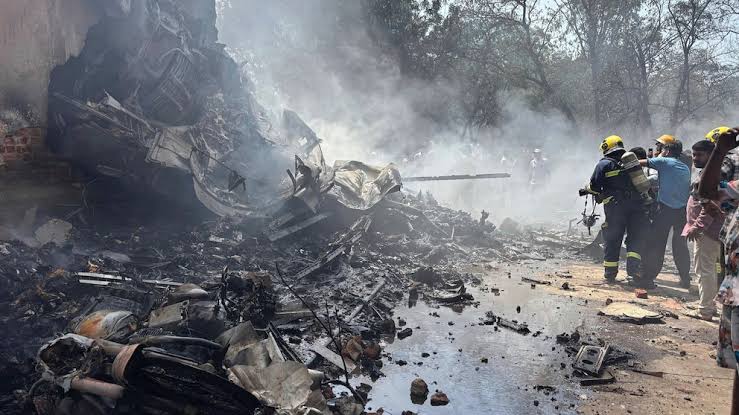The tragic crash of Air India Flight 171 near Ahmedabad airport on Thursday could turn out to be the costliest aviation accident in Indian history. Experts believe that based on the contract between the airline and its insurers, the insurance payout could reach unprecedented levels. Out of the 242 people on board the Boeing 787 Dreamliner, 241 lost their lives, and the aircraft was completely destroyed. Several people on the ground also died in the crash.
How Much Might Insurance Companies Have to Pay?
According to aviation industry experts, the ill-fated aircraft was a Boeing 787-8 Dreamliner. The total insurance claim for this crash could range between $210 million to $280 million—equivalent to over ₹2,400 crore in Indian currency.
What Does Aircraft Insurance Cover?
In aviation accidents, airline companies usually have separate insurance policies for aircraft hull (the physical aircraft), spare parts, and legal liability (including passenger compensation). In this case, Air India’s insurance policy covers both the aircraft damage and the passengers’ deaths.
Reports suggest that Air India has insured the aircraft through GIC Re and Tata AIG. These two insurers will be responsible for handling the claim payments.
How Is the Claim Amount Determined?
According to aviation insurance experts, the value of the aircraft (declared at the time of insurance) forms the basis for compensation assessment. The aircraft involved in the crash (VT-ABN) was a 2013 model Boeing 787 Dreamliner. In 2021, its insured value was around $115 million. However, current valuations for this aircraft class range between $211 million and $280 million, depending on factors such as age and configuration.
What About War or Terrorism-Related Crashes?
Airlines often take additional coverage known as Hull War Risk Insurance. If a crash is caused by a terrorist attack or war-like conditions, this coverage is activated. However, there has been no indication so far that such factors were involved in this crash.
Also Read-: How Did the Air India Plane Crash? Impact of Engine Failure or Landing Gear Malfunction Explained
Will Insurance and Reinsurance Companies Feel the Pressure?
The largest portion of the claim is expected to be related to passenger and third-party losses. Since the plane crashed in a residential area, third-party damages are also involved. In such large-scale disasters, claims are usually spread across multiple insurance and reinsurance companies.
How Will Passenger Compensation Be Calculated?
Compensation for the families of deceased passengers will be calculated under the Montreal Convention 1999, which India adopted in 2009. According to the convention, compensation of up to 128,821 Special Drawing Rights (SDRs) can be given per passenger.
As per the October 2024 exchange rate (1 SDR ≈ $1.33 ≈ ₹120), this amounts to around ₹1.54 crore per passenger. Thus, insurers may have to pay this sum for each life lost in the crash.
Also Read-: What is the Lifespan of a Boeing 787 Dreamliner, and How Old Was Air India’s Crashed Plane?
What Assistance Has Tata Group Announced?
As Air India is now a part of the Tata Group, the company has announced an interim compensation of ₹1 crore for the families of each deceased passenger. However, the final compensation will depend on insurance assessments and rules. Tata Sons Chairman N. Chandrasekaran has stated that the group will maintain complete transparency during this process.
What Impact Will This Have on India’s Insurance Sector?
Experts believe this accident could become a turning point for India’s aviation insurance industry, which is currently valued at around ₹900 crore. Though most major claims are typically reinsured, this incident may lead to an increase in insurance premium rates in the future.


